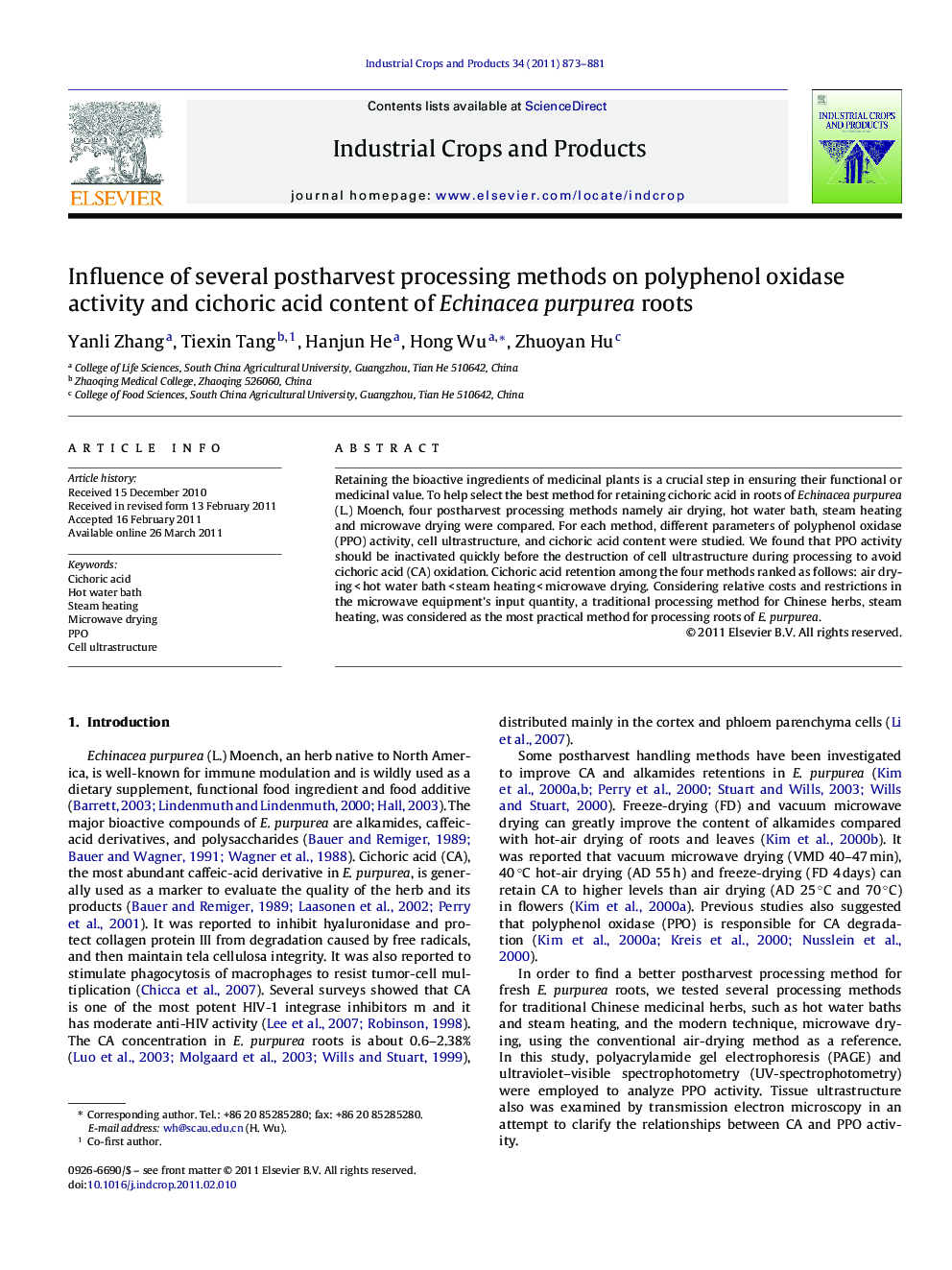| Article ID | Journal | Published Year | Pages | File Type |
|---|---|---|---|---|
| 4514536 | Industrial Crops and Products | 2011 | 9 Pages |
Retaining the bioactive ingredients of medicinal plants is a crucial step in ensuring their functional or medicinal value. To help select the best method for retaining cichoric acid in roots of Echinacea purpurea (L.) Moench, four postharvest processing methods namely air drying, hot water bath, steam heating and microwave drying were compared. For each method, different parameters of polyphenol oxidase (PPO) activity, cell ultrastructure, and cichoric acid content were studied. We found that PPO activity should be inactivated quickly before the destruction of cell ultrastructure during processing to avoid cichoric acid (CA) oxidation. Cichoric acid retention among the four methods ranked as follows: air drying < hot water bath < steam heating < microwave drying. Considering relative costs and restrictions in the microwave equipment's input quantity, a traditional processing method for Chinese herbs, steam heating, was considered as the most practical method for processing roots of E. purpurea.
► Three processing methods are effective to retain cichoric acid in high levels. ► Steam heating treatment is the first time to apply to Echinacea. ► Our processing methods have the advantage of simple operation, short time and cost saving. ► Our originality is the combine of observation of cell ultrastructure and activity analysis of PPO. ► More histological and molecular biological evidence were provided about cichoric acid degradation than the past researches.
